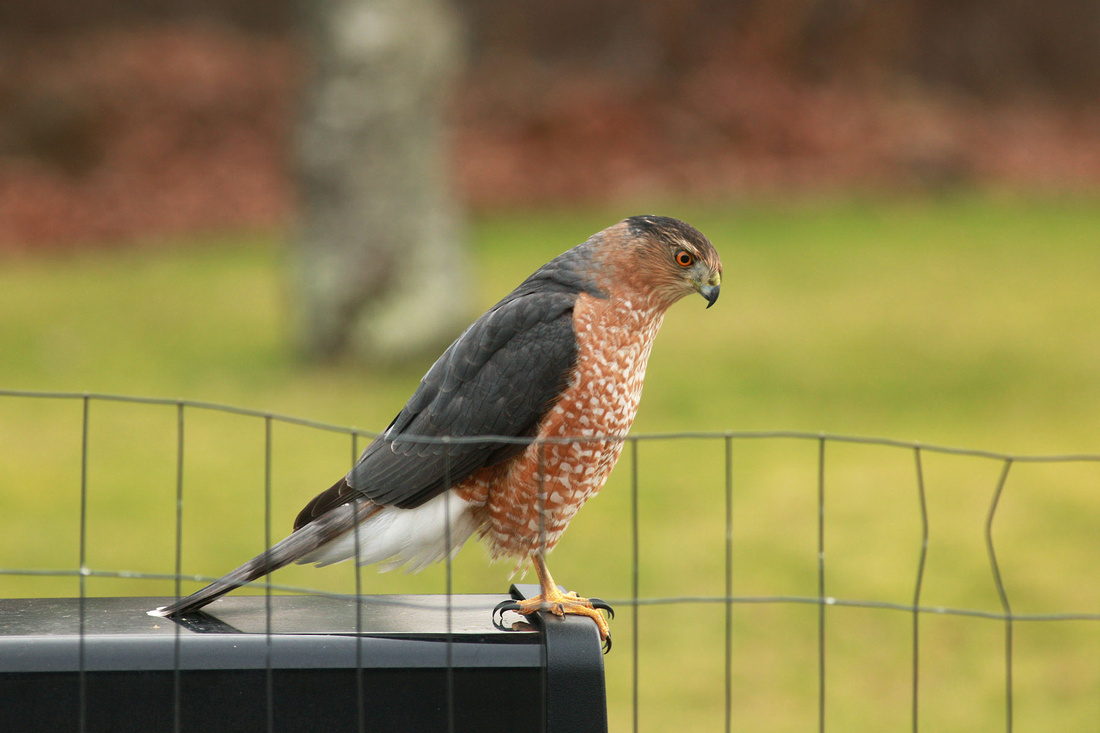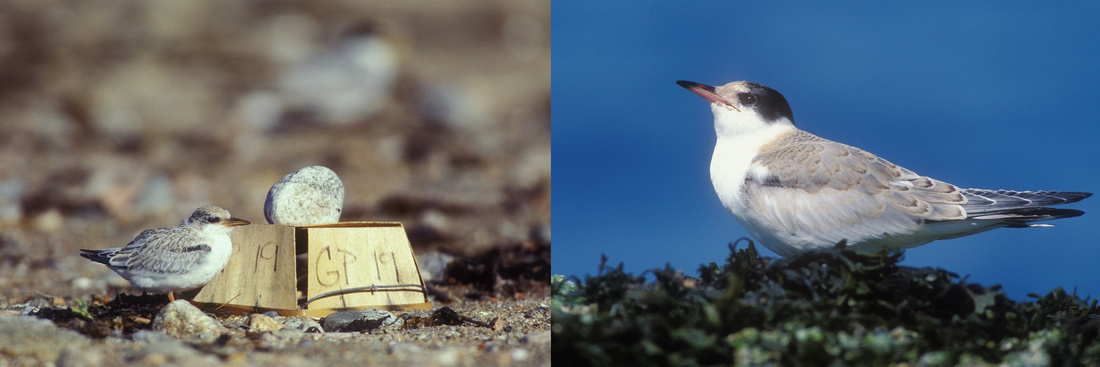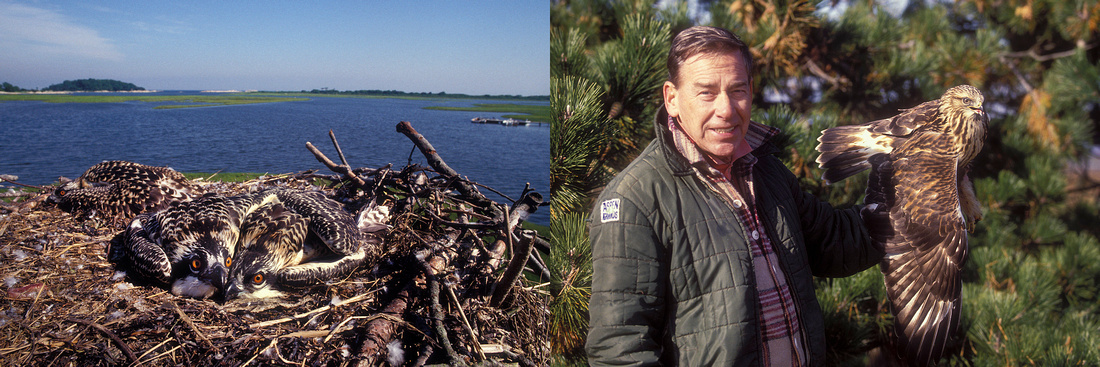WILDLIFE PHOTOGRAPHY Pt. 1 - HOW CLOSE IS TOO CLOSE?
This is the first of a series on some thoughts I have about wildlife photography. I've been working on it for a while, saving it for a week when things were really quiet. But, since the behavior of birders and photographers has been a recent topic of discussion I decided to post it now. I doubt this "conflict" will ever be fully resolved.
******************************************************************************************************************************************************
Have you ever wondered why most wild animals are so wary of humans? It's obviously an instinctive behavior because for millions of years the two-legged creatures walking upright have tried to kill them, whether for food, self defense or more recently (in historic terms) for sport. Even the founding fathers of American ornithology like Alexander Wilson and John James Audubon shot most of their subjects to better study them. With a history like that, it's no wonder that birds and animals can be tough to get close to.
Last fall, a very large Cooper's Hawk (pictured below) terrorized my bird feeders for several weeks. When the Coop flew in, some of the birds would dive for cover in the tall weeds below the feeders and the hawk figured out how to stomp through the grass to find them. One day I watched from my window as the hawk, stomping around on the ground like a T-Rex, crossed paths with a Gray Squirrel eating fallen seeds. What followed was hilarious, but also very illuminating. The hawk rose up and repeatedly flashed it's wings to scare the squirrel off, but the squirrel ignored the puffed up accipiter, and continued stuffing its face. The standoff continued for a few seconds, when the squirrel grew tired of the threats and made a head fake towards the hawk, causing it to jump back and pursue its quarry in another clump of weeds. The squirrel, often prey to other hawks, instinctively knew that this type of hawk was not a threat even though it was bigger and acting aggressively. I wish I could have captured this drama, but the first move I made from behind the window sent them both scattering.

 Knowing its diet, the birds were terrified of the hawk while the squirrel paid little mind to it. Humans are not so predictable. Even though most people today mean no harm to individual animals or birds, there are now, and always have been plenty who do. So instinct tells most creatures to err on the side of caution when it comes to humans. And we don't like it when the tables are turned, and we are the ones in danger. Most predators that see humans as food or a threat to be challenged are not tolerated in populated areas, and are banished to the most remote areas, or parks and zoos. Imagine how different wildlife photography would be if you could just walk right up to birds and animals. It would be far less challenging to get close to a subject, and would eliminate the need to use a telephoto lens. It would also eliminate the biggest controversy about wildlife photography, getting too close to subjects. There are times when a creature shows no fear of people, but it's never likely to become the norm.
Knowing its diet, the birds were terrified of the hawk while the squirrel paid little mind to it. Humans are not so predictable. Even though most people today mean no harm to individual animals or birds, there are now, and always have been plenty who do. So instinct tells most creatures to err on the side of caution when it comes to humans. And we don't like it when the tables are turned, and we are the ones in danger. Most predators that see humans as food or a threat to be challenged are not tolerated in populated areas, and are banished to the most remote areas, or parks and zoos. Imagine how different wildlife photography would be if you could just walk right up to birds and animals. It would be far less challenging to get close to a subject, and would eliminate the need to use a telephoto lens. It would also eliminate the biggest controversy about wildlife photography, getting too close to subjects. There are times when a creature shows no fear of people, but it's never likely to become the norm.
I'm not a hunter, but I grew up with a little exposure to it and first learned some of the skills I use today in wildlife photography watching my stepfather hunt. These skills include knowing the behavior of your quarry, figuring out how to find and get close to it and having the patience to wait for the right shot. We occasionally had a freezer stocked with venison and my folks always used every part of the deer, very little went to waste. One of my few hunting memories as a kid is being sent back to where a deer was field dressed to get the heart, liver and kidneys. I couldn't relocate the gut pile, but that may have been a subconscious effort on my part to avoid having to eat the organs. The message was clear, though, if you are going to kill an animal make sure it isn't done wastefully.
So when we recently we had a free trial period of the Sportsman's Channel on our television programing and I was compelled watch some of the hunting shows. I don't harbor a hateful grudge against hunting, but some of these shows were really shocking to me. One show featured a mom and her two daughters, a teenager and a pre-teen in matching pink and black camo t-shirts, on an African safari. They hunted from a blind at a water trough, reading books and playing on their Ipads as they waited for their quarry, obviously habituated to the water feature, to arrive. Each of them shot their own Kudu and warthog and after each kill, they posed with their trophy and repeated their signature line to the dead animal ... "Rest in peace, dude. Thanks for the awesome hunt". Another hunter repeatedly thanked God for providing such magnificent animals for him to kill, all of which were apparently destined for a wall in his house. In yet another, a hunter was shooting endangered African antelope on a Texas game farm. His message, ostensibly to the African people who might get the channel, was to show that hunters would be willing to pay far more to visit their country to shoot these endangered species, than the six dollars a pound they were worth as food. Therefore, they should protect these antelope for economic reasons.
Everyone has a different perspective when it comes to nature, and what some find ethical or entertaining is shocking or offensive to others. I liken it to talking politics, no matter what your viewpoint, there's always a group of people who think you are uneducated, misguided, crazy, evil or worse. Obviously, these hunting shows have an audience, but I certainly wouldn't pay to watch them. I know many hunters have immense knowledge of and respect for wildlife, and that hunting organizations and license fees do a great deal to preserve critical habitat for creatures. But, I suspect many hunters would cringe if they watched these types of shows, too. I've never been a fan of trophy hunting, and find it ridiculous to thank an animal you killed to put on your wall or suggest it would somehow be rewarded for its sacrifice in the animal afterlife. But hunters and wildlife photographers have little something in common, more than just an interest and knowledge of birds or animals, and a perhaps camouflage wardrobe. What we think is a worthy and harmless pursuit, some others see as a selfish and unnecessary exercise that puts wildlife under undue stress or danger. And just as in the hunting community, there are always photographers who push the limits and give the group a bad reputation.
When I began photographing birds in the early 1990's there were only a few "bird photographers" in Connecticut. There was a large network of avid birders, and many were very kind, and willing to share their knowledge. I learned a lot from them, and still do. But birders and photographers were sort of like oil and water, they didn't mix well, and there was often tension between the two. I sometimes felt like I was being eyed disapprovingly when photographing in the presence of birders. They were the protectors and defenders - photographers got too close to the birds, pushed them or scared them off for selfish reasons. To them a picture was like a "trophy".
That's not to say that I agreed. Years ago I was out at Griswold Point in Old Lyme when terns nested there (before a succession of storms reduced it to its present state). It was August, near the end of the nesting period, and many newly fledged terns gathered at the water's edge, waiting to be fed by adults returning with fish. A string line cordoned off the nesting area, but I slowly crawled on my belly along the waterline and got within a reasonable shooting distance of the terns without scaring them off. After a short while photographing, all the birds spooked suddenly. I looked up to see what caused the commotion and saw a man with binoculars walking through the center of the nest colony directly towards me. I was about to tell him he shouldn't be walking through the nest area but he spoke first. He politely told me that I was in a sensitive bird nesting area and that I would have to leave. He went on to explain that he was monitoring the colony for the Nature Conservancy, and that my presence could scare the adult terns away from nests leaving any unfledged chicks at risk to predation from gulls. I looked incredulously at him, since that's exactly what he had just done, and explained that I'd spent half an hour crawling along the waterline without scaring off the birds, any of them. He insisted I should leave, even though I was never above the high tide mark. In his mind, he was protecting the birds.
I have photographed nesting terns and other nesting birds and I didn't think I was harming the birds. The birds returned to the nest, fed their chicks and carried on as usual, but it's all in the eye of the beholder. The 20-year old picture below, left, shows an ill-fated effort devised to benefit the terns at Griswold Point, where wooden baskets were placed over the nests to protect them from predation. I was told that predators figured out that under each basket was a meal, and that's what put an end to the project. Sometimes even those trying to protect the birds may do more harm than good.


Scrutiny came not only from birders, but from other photographers as well. As a novice, I was eager to show off my work and gave out pictures I had taken, including one from a newspaper story I did about the recovering Osprey population. Amazingly, in the early 1990's there were only a few dozen Osprey nests in the state. I went out with volunteers who monitored the nests and the banded chicks under the auspices of the D.E.P and U.S. Fish and Wildlife Service, and with their permission, I was allowed to climb the ladder and photograph the chicks in one of the platform nests. I heard from someone that renowned birder, photographer and hawk bander Ray Schwartz saw the picture and was very upset with me, not knowing the story behind the photo, or me very well. Fortunately, I got to know Ray and we became friends. I thought of him as a mentor and spent a lot of time talking to him in his hawk blind at Hammonasset before he died. Ray loved hawks and devoted countless hours to their study, but he confided that he, too, sometimes felt the disapproval from some in the birding community who thought banding needlessly endangered the hawks.


With the advent of the digital age of photography, there are many more wildlife photographers around now than two decades ago. It's also particularly interesting now that things have come full circle, and many more birders have cameras, and want to photograph the birds they see. It's not uncommon to see dozens of people photographing a "good" bird when it shows up. Birds and animals often react differently to a single photographer, approaching slowly, lowly and indirectly than they would to a large group, spread out and jockeying for position. Internet postings detailing the locations of subjects also allow many more people to "visit" a subject. A creature may not mind one or two visits, but what if that turns into dozens of people a day stopping by? I appreciate it when someone posts a sighting that I get to see or photograph and I have certainly been part of a group stalking a bird or animal. There are plenty of times, though, when I just don't feel too good about those situations. Sometimes it's just just being a part of something I know isn't best for the animal. Other times I cringe when I see a photographer doing something I believe is "wrong", but then I wonder if people see me the same way. The result is that I spend a lot of time searching and photographing alone.
As wildlife photographers, passionate about both subject and craft, we're often faced with the challenge of balancing the pursuit of one at the expense of the other. There are numerous accounts of photographers who ignore or lose sight of the welfare of a bird or animal in their quest to get a better picture of it. Sometimes they even ignore their own welfare. Some prefer wider, more environmental shots, others tight portraits, others simply want a record photo, easily obtained from a distance. Everyone's priorities and perspectives are different. I like to capture the natural behavior of birds and animals, so if they are acting alarmed or take flight, I have failed. There are some common sense guidelines that I try to follow, but I'm sure I've done things within these guidelines that others don't approve of. In general, my goal is to get the best photographs possible, and I try to let the subjects decide how close I should be based on their behavior.